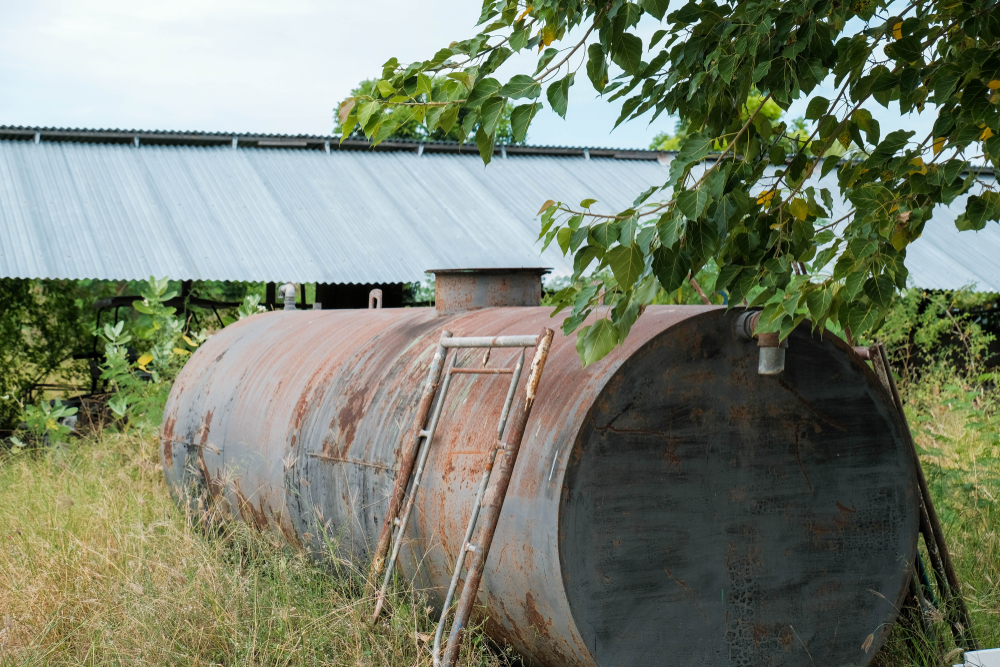Common Signs that Your Petroleum Tank Needs to be Removed
Petroleum tanks, whether underground or above ground, play a crucial role in storing fuel for various purposes, from heating homes to powering industrial operations. However, these tanks do not last forever. Over time, exposure to environmental elements, natural wear and tear, and lack of maintenance can lead to significant issues that may require their removal. In areas like Brooklyn Center, MN, where climate conditions can accelerate the deterioration of metal and other storage materials, property owners must remain vigilant in spotting signs of trouble. Neglecting a compromised tank can result in severe consequences, including environmental hazards, property damage, and costly regulatory fines. Recognizing when petroleum tank removal is necessary can save homeowners and business operators from significant financial and legal liabilities while protecting the environment.
Corrosion and Structural Deterioration
One of the most common tank wear issues in Brooklyn Center, MN, is corrosion. Underground storage tanks (USTs) and above-ground tanks are both susceptible to rusting, especially if they have been in service for decades. Corrosion occurs when metal reacts with moisture and oxygen in the soil, forming rust that weakens the tank’s structure. Over time, this deterioration can lead to leaks, allowing petroleum products to seep into the ground and contaminate surrounding soil and water sources.
For above-ground tanks, visual signs such as flaking paint, rust spots, or pitting are indicators that corrosion is advancing. Underground tanks, however, can be more challenging to inspect. A strong indicator of hidden corrosion is the presence of petroleum odors in the surrounding area, unexplained vegetation damage near the tank site, or sudden drops in fuel levels that cannot be attributed to usage. If corrosion has progressed significantly, it is advisable to consider petroleum tank removal before it causes irreversible damage to the environment and property.
Fuel Leaks and Environmental Concerns
Leaking petroleum tanks pose severe environmental risks. When fuel seeps into the soil, it can contaminate groundwater, making it hazardous for consumption. This is a particularly alarming issue in communities like Brooklyn Center, MN, where residents rely on clean water sources for daily use. A leak can go unnoticed for a long time, leading to extensive contamination that can take years and significant financial resources to remediate.
If you notice unexplained increases in fuel consumption, strong gasoline or diesel smells, or oily residues forming on nearby surfaces, it is possible that your petroleum tank is leaking. Additionally, an inspection may reveal petroleum sheen on groundwater or puddles near the tank. The moment a leak is suspected, it is critical to take immediate action by consulting with professionals who specialize in petroleum tank removal. The longer the issue persists, the greater the damage to the environment, and the higher the costs of cleanup and legal penalties for failing to address the contamination promptly.
Regulatory Compliance and Liability Issues
Many older petroleum tanks were installed decades ago, often before strict environmental regulations were enforced. As a result, they may no longer comply with modern safety and environmental standards. Regulatory agencies, such as the Environmental Protection Agency (EPA) and local environmental bodies in Minnesota, impose stringent regulations regarding petroleum storage. Non-compliance with these regulations can lead to hefty fines and legal repercussions.
Regular inspections may reveal that your petroleum tank does not meet current safety standards, requiring immediate attention. In some cases, insurance companies may refuse coverage for properties with outdated or non-compliant tanks, leaving property owners financially vulnerable in case of leaks or damage. Additionally, if a leak from an old petroleum tank contaminates neighboring properties, the property owner can be held liable for cleanup costs, lawsuits, and damages. To avoid these risks, petroleum tank removal is often the best course of action, ensuring compliance with environmental laws while mitigating financial liabilities.
Declining Tank Efficiency and Increased Maintenance Costs
A petroleum tank that requires frequent repairs or maintenance may indicate it is reaching the end of its useful lifespan. Common tank wear issues in Brooklyn Center, MN, often include malfunctioning fuel pumps, clogged filters, and unstable fuel levels. These issues can lead to inefficiencies in fuel storage and distribution, resulting in increased operational costs. Frequent servicing and repairs can become financially burdensome, especially if the underlying problem is persistent.
Additionally, older tanks may not be compatible with modern fuel formulations, leading to fuel degradation and compromised performance. If your petroleum tank requires constant repairs or exhibits inconsistent performance, removing and replacing it with a newer, more efficient model may be a cost-effective solution. Upgrading to a modern tank can improve safety, efficiency, and compliance while eliminating the risks associated with aging petroleum storage systems.
Conclusion
Petroleum tanks are vital assets, but they require proper maintenance and timely replacement to prevent costly and hazardous issues. Common tank wear issues in Brooklyn Center, MN, such as corrosion, leaks, and declining efficiency, are warning signs that petroleum tank removal may be necessary. Ignoring these signs can lead to severe environmental contamination, regulatory fines, and financial burdens associated with property damage and liability claims. By recognizing the early warning signals and taking proactive steps to remove and replace aging tanks, property owners can ensure safety, compliance, and peace of mind. If you suspect your petroleum tank is failing, consulting with an experienced removal specialist is the best way to safeguard your property and the environment.



